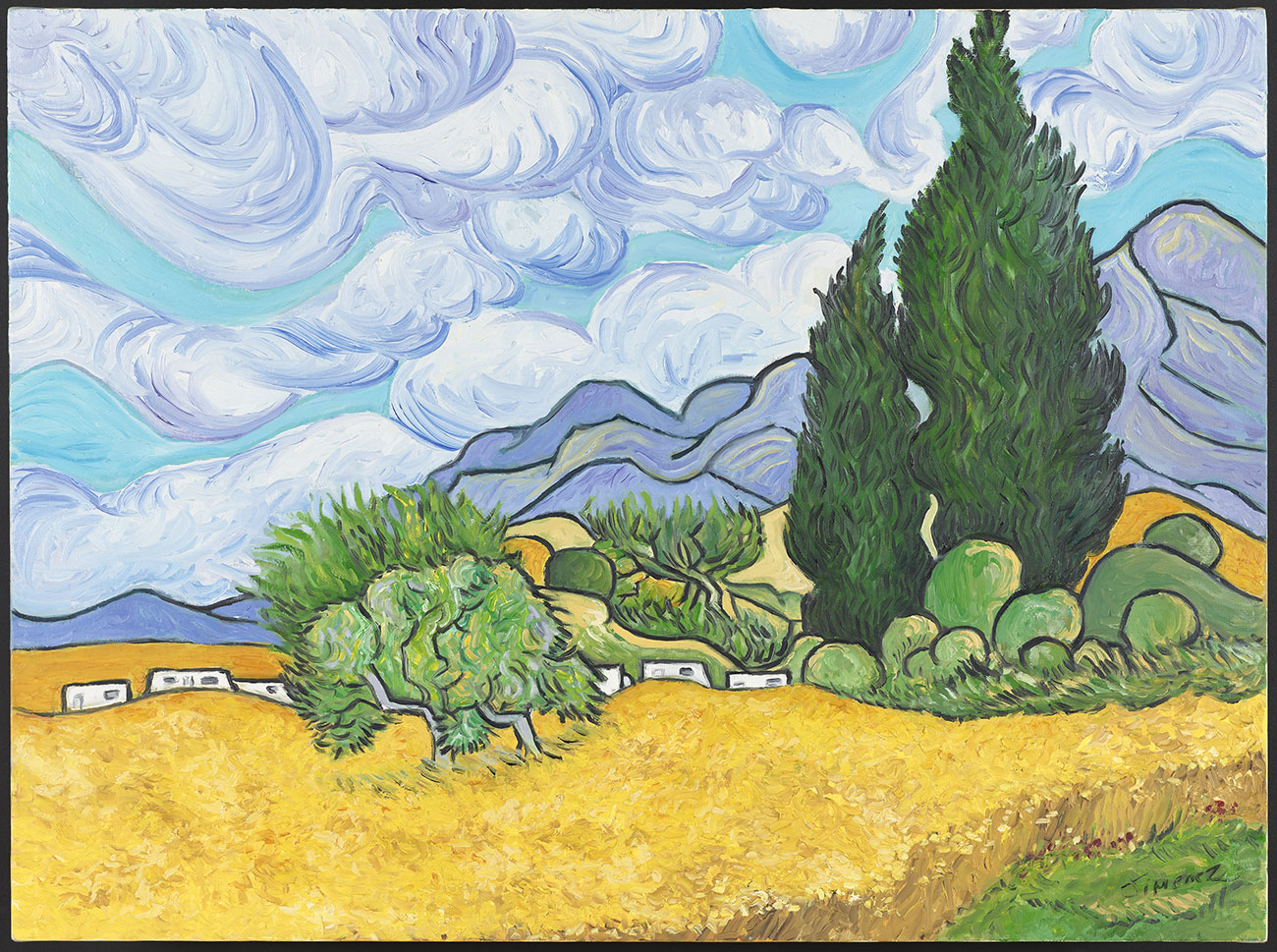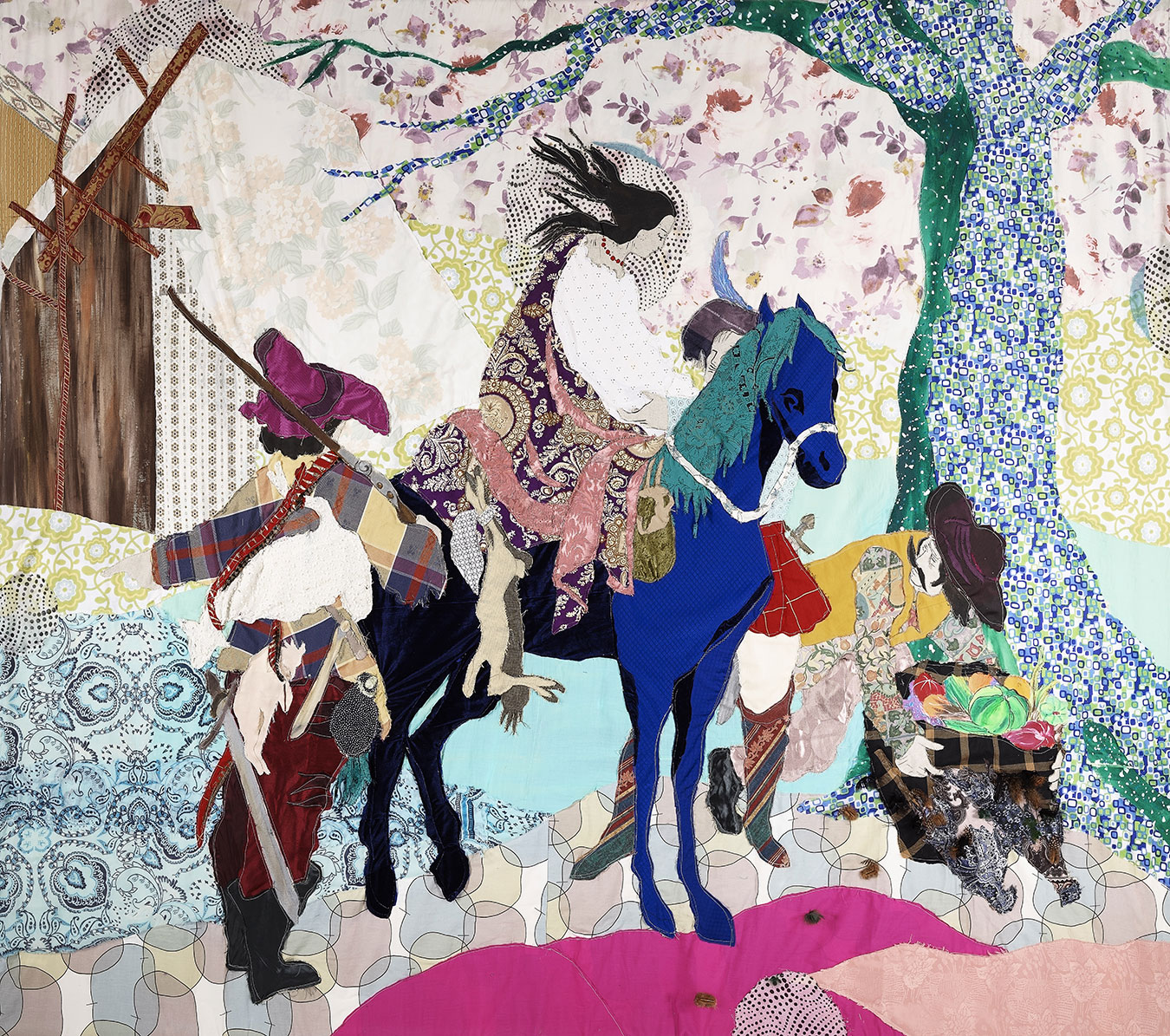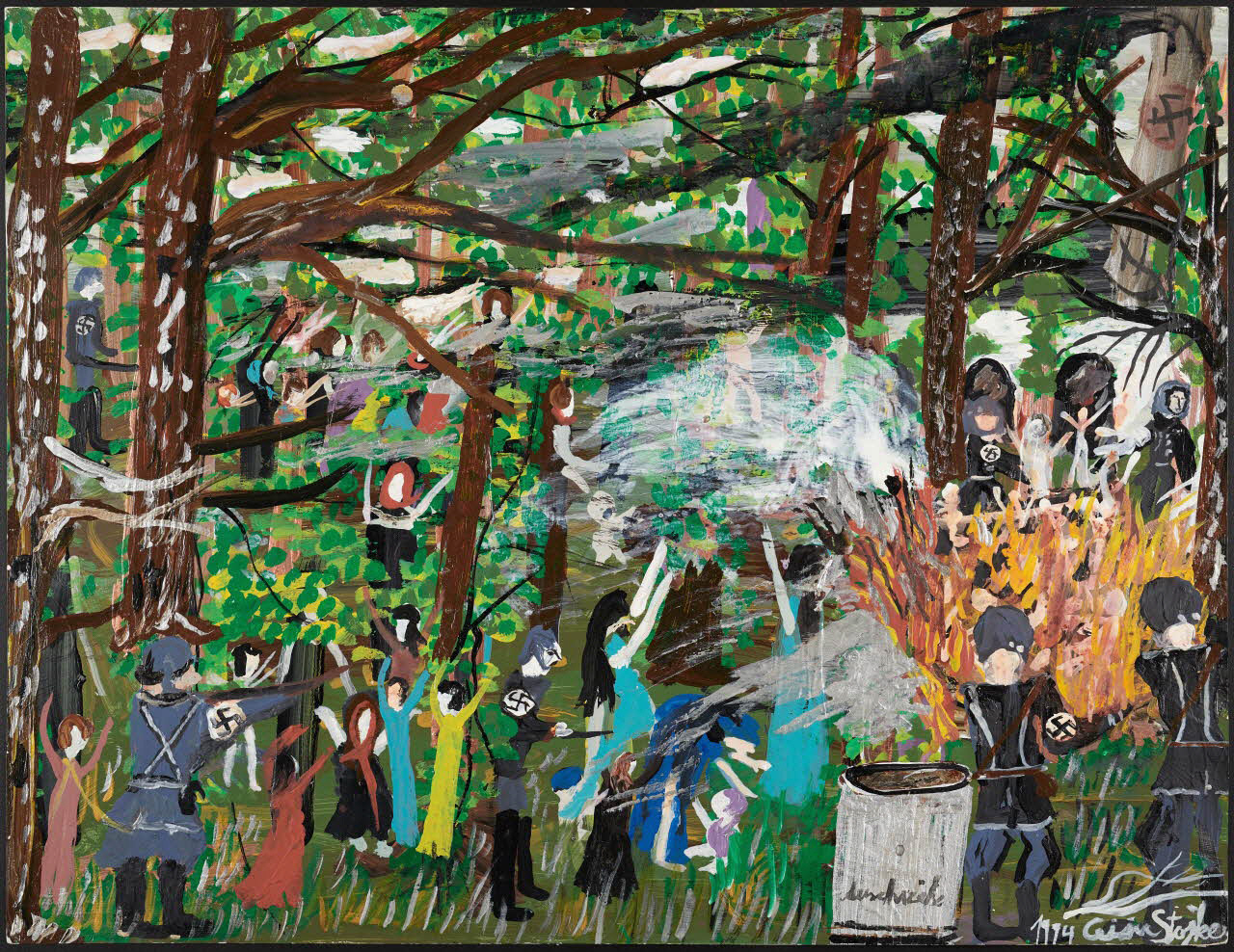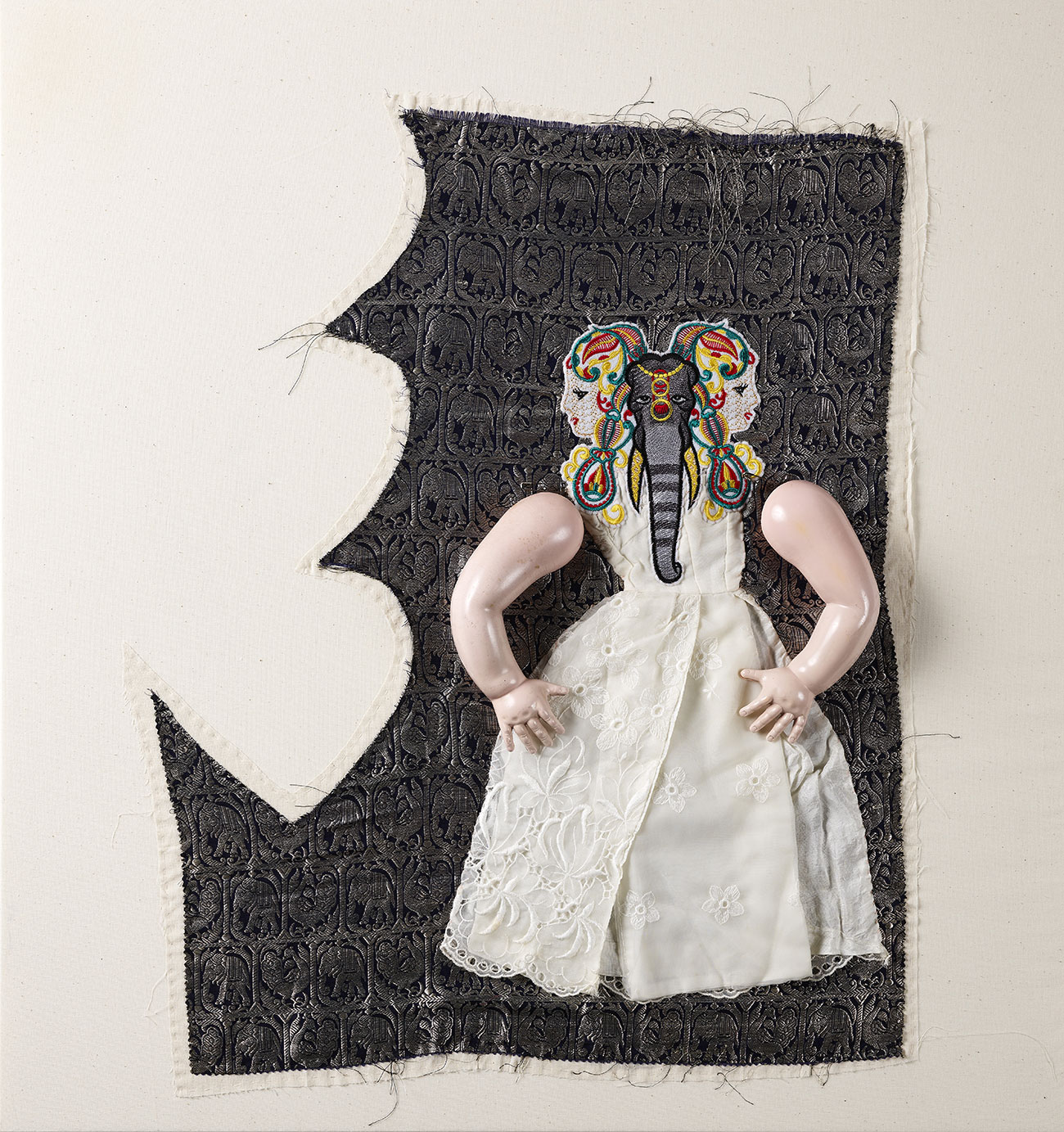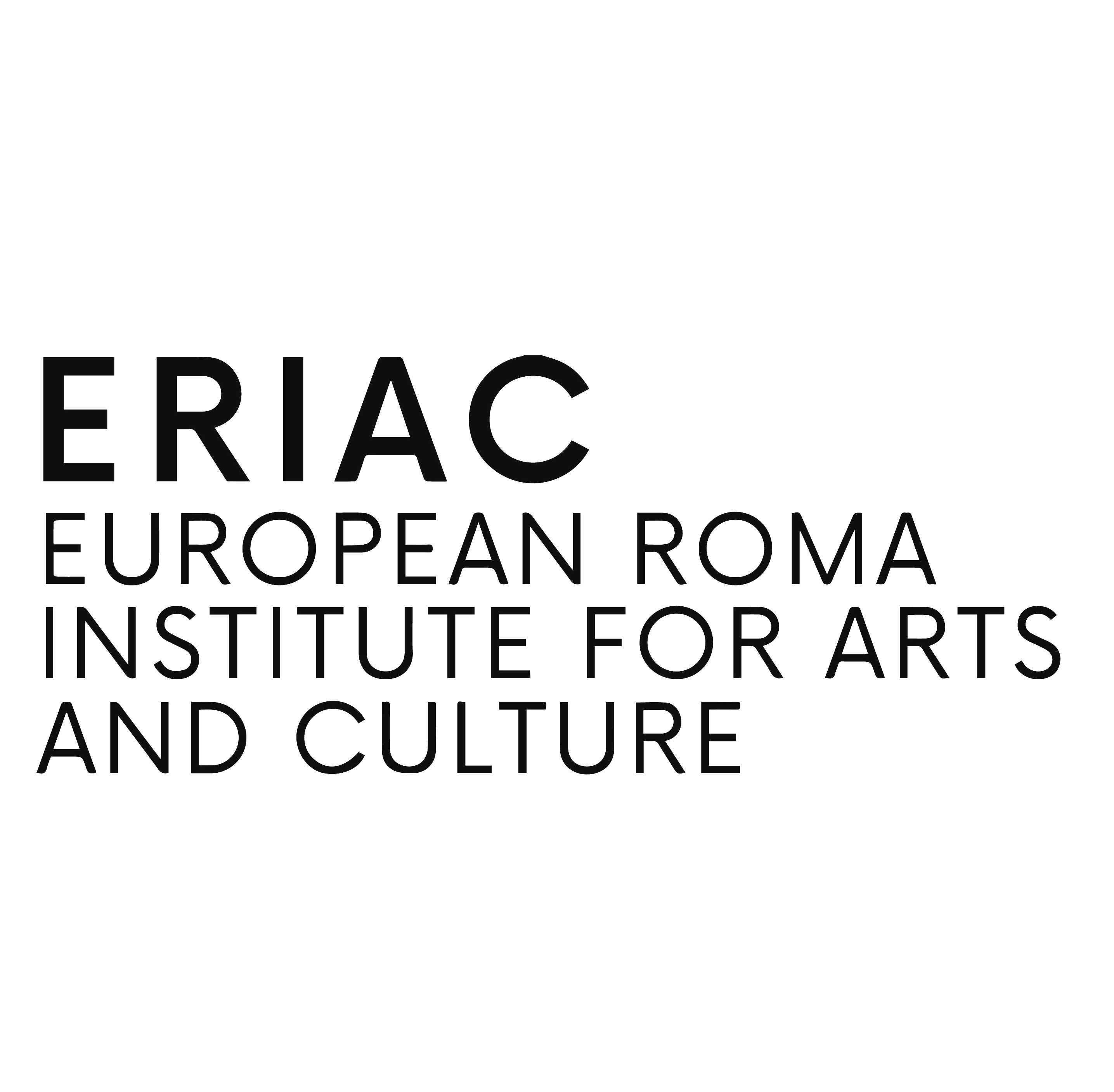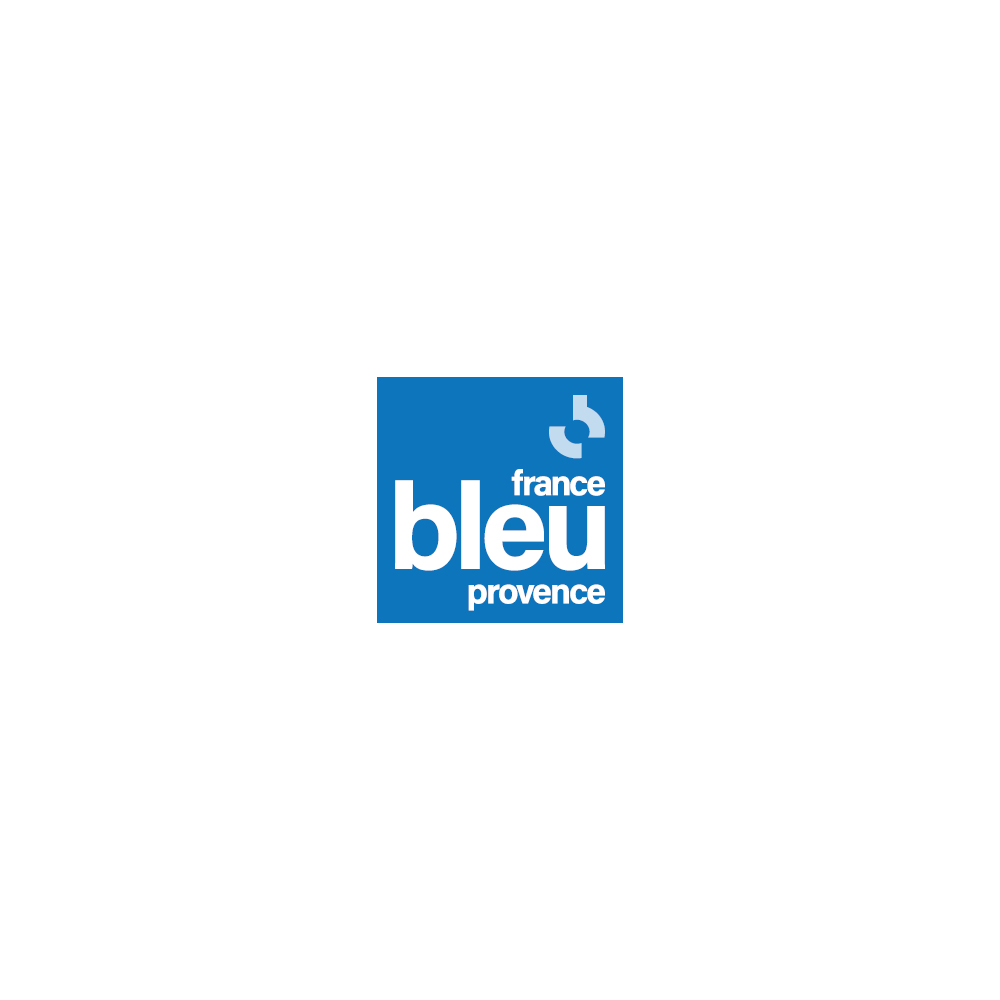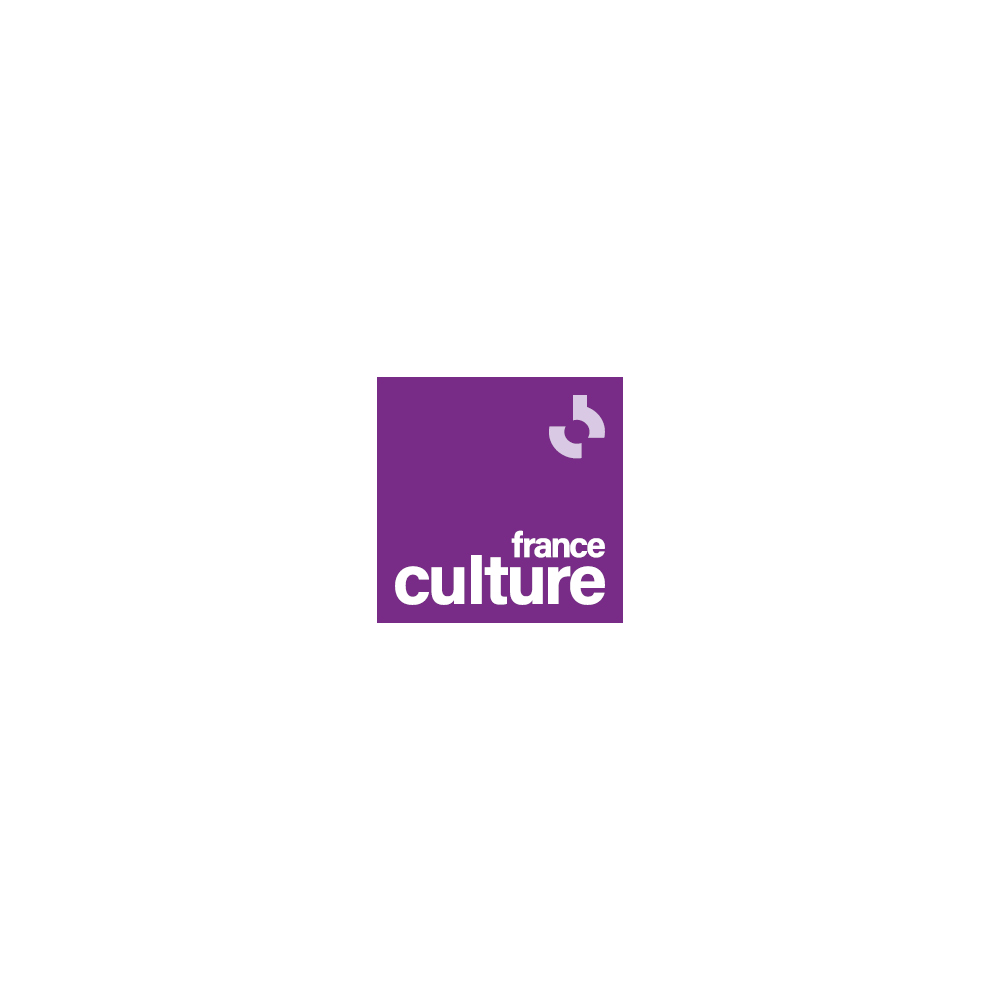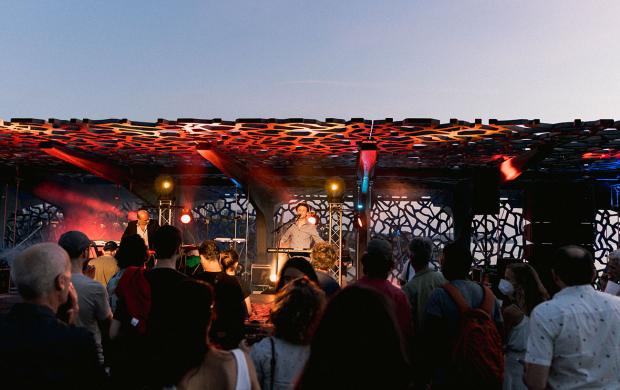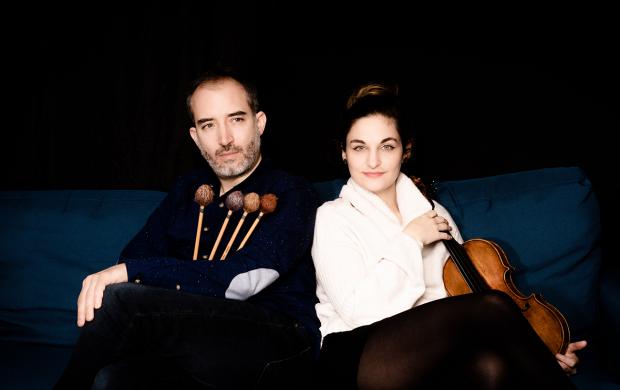Barvalo
Roma, Sinti, Manouches, Gitanos, Travellers...
Mucem, J4—
Niveau 2
|
From Wednesday 10 May 2023 to Monday 4 September 2023
The new exhibition at Mucem is devoted to the history and diversity of the Romani populations of Europe
In Romani, barvalo means "rich" and, by extension, "proud". This polysemous word is the title of a new exhibition at Mucem devoted to the history and diversity of the Romani populations of Europe. A history that is inseparable from that of antigypsyism, against which those who are sometimes still called "Gypsies" have been fighting for a thousand years.
Developed in collaboration with Eriac, the exhibition "Barvalo" was conceived by a team of nineteen people of Romani (Roma, Sinti, Manouches, Gitanos, Travellers) and non-Romani origin, of different nationalities and profiles. "Barvalo" is divided into two parts.
From the earliest accounts of their arrival in Europe to the present day, the first section of the exhibition highlights the ways in which persecution of the Romani population, culminating in the Holocaust, arose and is perpetuated. This first part also deals with the role of stereotypical representations in culture and folklore. At the same time, this part of the exhibition also shows how Romani groups expressed themselves, especially through a common language, Romani, and claimed their rights in these situations of oppression.
The second part of the exhibition offers a reflection on the notions of belonging and identity, by reversing the visitor's view. This is the installation by the artist Gabi Jimenez, the Gadjo Museum: here we discover "gadjology", an imaginary and parodic science that echoes a Romani perception of the Other. This space takes the form of a diorama devoted to "gadjo culture", thus revealing the absurdity of the essentialisation of the Other when it is pushed to its extreme. It also questions the role of the ethnographic museum as a disseminator of "truth".
At the end of the visit route, a gallery of portraits of famous and lesser-known individuals testifies to the richness of Romani cultures and the pride of the various communities in contributing to the cultural diversity of European societies in order to assert, loud and clear, barvalo !
Throughout the exhibition, the visitor is accompanied virtually by four 'guides' belonging to four distinct Romani groups. Their personal and family stories resonate with a broader, shared European history.
In each part, the works of non-Romani artists are displayed alongside those of contemporary Romani sculptors, photographers and painters in order to allow the representatives of these minorities to give their vision of nine centuries of presence in Europe and to affirm their culture.
The exhibition brings together 200 works and documents (printed, video and sound) from French and European public and private collections, including the Louvre Museum, the National Museum of Natural History in Paris, the Museum of Ethnography in Geneva, the Staatliche Kunstsammlungen Dresden, the Nicéphore Niépce Museum in Chalon-sur-Saône, the Archives départementales des Bouches-du-Rhône, the Archives municipales de Marseille, the Médiathèque Matéo Maximoff, the Musée de Grenoble, the National History Museum and the National Archives of Romania, the Kai Dikhas Foundation, the European Roma Institute for Arts and Culture in Berlin, and the Dokumentations- und Kulturzentrum Deutscher Sinti und Roma in Heidelberg.
Among these 200 works, 62 come from Mucem's collections and 15 were specially conceived for the exhibition and produced by the museum: 6 commissions from European Romani artists – Luna De Rosa (Italy), Gabi Jimenez and Marina Rosselle (France), Mitch Miller (Scotland), Emanuel Barica (Romania) – and 9 audiovisual creative works (film, animated map and sound).
Curatorial team:
Co-curators :
Julia Ferloni, curator for heritage, head of the "Crafts, Trade and Industry" unit, Mucem
Anna Mirga-Kruszelnicka, associate deputy director of Eriac - European Roma Institute for Arts and Culture (Berlin)
Jonah Steinberg, associate professor of anthropology and director of the Global Studies, University of Vermont, USA
Associate curators:
Françoise Dallemagne, collections and research officer, Mucem
Alina Maggiore, CIFRE researcher at Mucem, doctoral student in social anthropology, University of Aix-Marseille / University of Freiburg, Germany
Expert committee:
William Acker, lawyer, general delegate of the National Association of Traveller Citizens (ANGVC)
Yahya Al-Abdullah, PhD student in social anthropology, EHESS Paris
Nelly Debart, fairground worker, president of the National Association of Citizen Travellers and member of the Travellers' Advisory Council
Bénédicte Florin, lecturer in geography, Arab World and Mediterranean Team (EMAM), CITERES laboratory, University of Tours
Lise Foisneau, anthropologist, research fellow at the CNRS
Pascal Garret, photographer and sociologist, Tours
Caroline Godard, project manager, "Rencontres Tsiganes" association, Marseille
Gabi Jimenez, visual artist and president of the Departemental Association Gadje-Travellers and Gypsies of France (ADVOG)
Timea Junghaus, art historian, director of Eriac, Berlin
Jean-Pierre Liégeois, sociologist, honorary teacher-researcher and director (1979-2003) of the Roma Research Centre at the University of Paris-Descartes, consultant to the Council of Europe
Valentin Merlin, freelance photographer
Cristian Padure, linguist, teacher-researcher at the University of Bucharest
Santino Spinelli, musician, composer and professor at the University of Chieti
Sasha Zanko, tinsmith, president of the association "Tchatchipen" and delegate of the European Roma and Travellers Forum
Scenography: bGc studio, Iva Berthon Gajšak, Giovanna Comana, Clara Launay
Graphic design: Fabrice Petithuguenin
The Mucem would like to thank Eriac (European Roma Institute for Arts and Culture) for its invaluable support from the outset of the project and for allowing the installation of the RomaMoMA nomadic library in the exhibition.
-
Interview with Julia Ferloni, Anna Mirga-Kruszelnicka and Jonah Steinberg, co-curators of the exhibition
-
Mucem
(M.)
How did this project come about?
Julia Ferloni
(J.F.)
This project was born in 2014 at the instigation of Jonah Steinberg, who wrote to the Mucem suggesting that it should focus on Europe's largest ethnic minority (estimated at between 10 and 12 million people). It was unthinkable for us that it would be two gadjos alone who would speak on behalf of the Romani populations. We wanted to make a co-created exhibition. For two years, we travelled around Europe to meet with leaders of NGOs, activists, researchers... This is how we formed our committee of experts. In Berlin, we got in touch with Eriac, a key structure in the Romani institutional and political landscape in Europe.
Jonah Steinberg
(J.S.)
My interest in Romani populations began while researching in India and South Asia over thirty years ago. Later, while working with the University of Vermont in New England, I became interested in exploring the subject more deeply. I was very interested in the intellectual and epistemological exclusion of certain populations, and particularly Romani, which figure little in museums, art collections and universities... In 2014, when I visited the permanent collections of the Mucem with my children, I made the same remark. I therefore contacted the museum to express the need to "make room" within the museum for these populations that have been present in all European countries for a thousand years. The answer I received went far beyond my expectations, as the Mucem proposed to put on an exhibition. I immediately accepted!
Anna Mirga-Kruszelnicka
(A.M-K.)
Eriac joined the curatorial team in 2019 when the preparation of an exhibition on the theme of Romani populations at the Mucem had already begun. Julia Ferloni, in her capacity as custodian, visited Eriac in our Berlin office to conduct a meeting with the management team – executive director Timea Junghaus and myself. It was then that Julia realised that in order to develop an authentic and progressive representation of Romani people, it was necessary to involve them at the highest level of decision-making, i.e. by integrating them into the curatorial team. This was a way to send a powerful message, setting a new standard by involving Romani people in cultural activities of all kinds. Of course, it was also timely – we are seeing similar participatory processes and new museum protocols emerge as museums themselves become more open to decolonial practices.
M. One of the special features of this exhibition is therefore this committee of experts, which accompanied the preparation of the exhibition...
A.M-K. Not surprisingly, in addition to the establishment of a curatorial team involving Romani people, a relevant innovation was the creation of a committee of experts bringing together people of Romani and non-Romani origin from various nationalities and professions. The participation of Romani people from different groups, representing different generations, professions and lifestyles, allowed us to represent well the internal diversity that can be observed among Romani populations around the world. We're convinced that such a practice should not be the exception, but rather should be the norm in the development of exhibitions on Romani populations, or any other minority group. It is important to ensure that representatives of minorities are able to speak about themselves, rather than being talked about from an outside perspective. Such an approach is outdated and can be potentially harmful as it can lead to the unintentional reproduction of clichés and reinforcement of prejudices.
J.F. Involving the people concerned seemed obvious to us. With this committee of experts, we wanted to bring together people from all walks of life, and in particular convinced activists who wanted to fight against antigypsyism. We worked with a first circle of 14 experts, with whom we regularly organised workshops, and a second, wider circle of experts advised us and gave us food for thought... In total, about a hundred people were involved in this project.
We are coming to a time when the Romani people are not willing to let themselves be ignored. Throughout Europe, Romani activists are getting involved in everything that affects their community, including exhibition projects. They want to have their say. Even though these projects are very benevolent, they are often carried out by people who have not experienced antigypsyism on a daily basis. Romani people want to participate in the way their history is written. For example, in the case of the Second World War, it is not enough for them to appear only as victims of the Holocaust. They too fought, they resisted, they protected people hunted by the Nazis... They want to hold their heads high. Hence the title of the exhibition, which really speaks of pride. The ambition of this project lies in the fact that the Romani people, or rather the representatives of these people, can finally speak on their own behalf
M. Is there sometimes a difficulty in speaking with one voice? To agree on a common narrative?
A.M-K. Just as in the world of Romani people, we embraced diversity and plurality as something positive and beautiful, so we did not need to speak in unison, but rather to welcome different opinions and approaches. The discussions were rich, sometimes difficult, but we managed to find a consensus. We are also proud to incorporate this diversity into the exhibition's narrative. This is represented, for example, through the guides.
J.F. Indeed, a consensus had to be found. Depending on the nationality, depending on the community, there were different perceptions and expectations around this exhibition. So we had to create a common object and common stories.
What is at stake in this exhibition is precisely the great diversity of the Romani populations. So there could not be a single point of view. We decided to let these different sensibilities express themselves. For example, there was a small debate on how to translate the word "genocide" into Romani. For some, it was samudaripen ('the killing of all'). For others it was porajmos (the great devourer). But this word also refers to the female sex, which posed further problems. So as it was difficult to decide, we used both words in the room texts and in the catalogue, contextualising them.
In order to integrate this diversity into the project, we wanted the visitor to be accompanied on their exhibition journey by four virtual guides, each representing a different Romani community. Each of these guides comes from one of the main groups living in France: Roma, Sinti, Manouches and Gitanos. Two of them belong to the Traveller community. The anthropologist Yoanna Rubio, the school mediator and linguist Slavka Radenez, the social worker Dylan Schutt and the fairground worker Sylvie Debart accompany the audience. These four people, with their real lives and experiences, appear as video guides in the exhibition, in order to better embody the polyphony of the project.
M. To make the history of the Romani populations is also to make the history of antigypsyism...
A.M-K. Absolutely. In fact, one cannot understand the current situation of Romani people – including the diversity of their subgroups and their contemporary socio-economic situation – without understanding the oppressive mechanisms of antigypsyism that, for centuries, underscore how they have been approached. It is also important to remain aware that antigypsyism has been shaped historically and is deeply rooted in our social practices, institutions, and even culture and education. This is why we dedicate a specific space in the exhibition to explain antigypsyism and show the different ways in which it manifests itself, also through history.
J.F. What we agreed on was the notion of gadjo, 'the Other', in Romani. From there, we gradually arrived at antigypsyism, which became our common base. Antigypsyism is rooted in a series of stereotypes that are in essence absurd. This is why the second part of the exhibition presents a 'gadjo museum'. To explain racism through the absurd. It tells us that the gadjo dresses in such and such a way, that he lives in such and such a habitat, that he has evolved from a hunter-gatherer to a sedentary person... This shows just how absurd it is to categorise and essentialise populations, and how, in this way, we create an ethnic type, fantasised and distorted. Thus, we invite the visitor to use their critical faculties to find out more about the nature of the population. We would like them to experience the aberration of antigypsyism for themself.
J.S. From the moment they arrived in Europe, Roma and Gitanos were discriminated against. The romanticisation of European societies around Romani populations also contains a large element of racism. Romani people have been assigned images of themselves without their permission; they have been portrayed in a discriminatory manner. Antigypsyism reached its most horrific manifestation during the Second World War, with the Holocaust, which nevertheless did not put an end to these trends. Segregation and poverty have continued to the present day. So have the massacres.
M. On a personal note, what was your main discovery while working on this exhibition?
J.F. I made friends! I never thought I would make friends in this way, or even by working on this exhibition. Because I too had prejudices... And I realised that these prejudices certainly came from what was around me, but also from my scientific readings... In fact, when I knew that I was going to work on this project, the first thing I did was to read a famous anthropologist who had written a travelogue about miserable Roma living in slums... It scared me... I was dreading the encounters to come. Because I trusted my readings, I trusted what I thought were well-meaning, solid people who held the truth. But I have since understood that this "truth" could be tainted by racism. And that the museum, as the bearer of these truths, could itself be a vehicle for unconscious racism and prejudice.
J.S. My discovery is that it is not up to us, custodians and curators, to decide how people should be represented. It was a very rewarding experience to be led by the voices of the expert committee... We thought everybody would agree on this or that, but not everybody did (and that was a good thing). So we let the voices speak, we let them lead us, as they are the first ones concerned, and they gave us wonderful things, which we could not have imagined alone. We simply had to trust them. And let them guide us.
On a personal level, I was very surprised by the existence of places of non-memory. In Europe, the memory of the massacres of the Romani population is neglected. The sites where Roma were killed in large numbers are hardly memorialised. In the Czech Republic, for example, there was until very recently a pig farm at the site where Roma were exterminated. In France, of the 34 sites where Romani populations were interned, more than half are not recorded. In Italy, the Roma genocide is not really recognised... It is a shameful situation.
M. How has this exhibition had an impact on the way the Mucem's collections are re-read?
A.M-K. One of the very positive and lasting effects of this exhibition is the way in which it has managed to shed a different light on the Mucem collections. We discovered that many of the items in the collection that were presented as being from Romani populations (in fact labelled with the term 'gypsy' as an ethnic slur) were not in fact produced by Romani populations. Some were created by non-Romani people and often reflect clichés and stereotypes associated with 'Gypsies'. In this sense, some of these objects are therefore anti-Gypsy
Secondly, some of the items that we might identify as created by community members are not labelled with the name of their author, or even with the name of the community. They are not contextualised.
But we are already seeing how these discoveries have led to very positive results. The Mucem has begun to acquire contemporary artworks created by Romani populations, thus balancing its collection with objects that are not only produced by Romani people, but also embody a modern and subjective representation of Romani identity and culture.
J.F. We identified over 900 objects in our collections, most of which were not produced by Romani people, but which depicted them, and most often in a rather biased way, reflecting a latent antigypsyism. For example, I cite a print, 'Gitanos at work', which shows Gitanos tending a horse. The description said that the horse had been stolen... But there was nothing in the illustration to explain this. And when you know the traditional Romani professions, you know how much care they gave to horses; they were horse traders and had a solid knowledge of equine medicine.
It was therefore necessary to recontextualise the collections by explaining the biases and prejudices of the people who made the inventory for the museum several decades ago. But the same issues arise with objects coming from a colonial context.
In the same way, we felt it was necessary to update our collections, by acquiring new objects, less marked by an old and stigmatising vision. Our idea is that the museum should not decide alone what is representative of the Romani people. It must involve members of the community so that they can say what they consider should be deemed as heritage. In the end, they gave us three main directions to guide our acquisitions: contemporary art, stories of the Holocaust, andevidence of the travellers' habitat, the caravan.
We also supported the exhibition with a field survey. Except that this time, our experts were the investigators. A great first! This gave us access to previously unpublished data. The survey "Romani crafts and know-how in Europe and the Mediterranean" allowed us to collect objects, photographs, videos, interviews and archives from 12 European countries, including France, Spain, Romania, the United Kingdom and Turkey, on subjects as diverse as the gitano rumba and the gathering of jasmine for perfumery in Grasse. You can see some of the objects collected and the people encountered during these regions at the end of the "Barvalo" exhibition.
- Eriac
-
Eriac is a joint initiative of the Council of Europe (CoE), the Open Society Foundations (OSF) and the Alliance for the European Roma Institute, established in 2017 and based in Berlin, Germany. Eriac has a unique mandate as the first transnational organisation for the recognition of Roma arts and culture. Eriac fights against negative prejudices towards Roma through arts, culture, and media. It disseminates a positive image and knowledge of the Roma in a spirit of dialogue, mutual respect and understanding. The Institute functions as a transnational creative hub supporting the exchange of creative ideas across borders, cultural fields and Roma identities. Eriac highlights the many and multifaceted contributions of Roma to European culture and documents the historical experiences of Roma across Europe.
In partnership with
